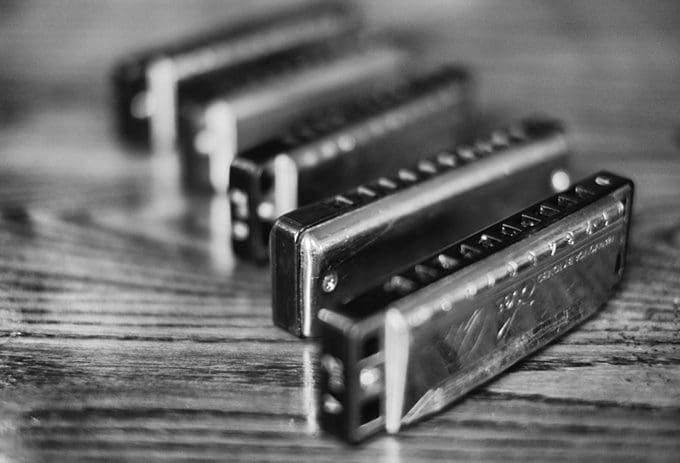words Al Woods

A harmonica is the most portable, affordable, and playable instrument you can own. Harmonicas produce a wide range of tones, and their versatility can be seen in different musical genres in which they are played.
The instrument blends seamlessly into any genre of music, whether it be country, blues, rock, classical music, or jazz. The following guide includes five tips that will help you choose the best chromatic harmonica for beginners.
1. Comb Material
The comb is the most crucial component of a harmonica. It consists of air chambers that cover the reeds. A comb is usually made from three types of materials:
● Wood
No other material sounds as warm as wood. However, a wooden comb can swell and warp when wet due to its imbibition properties.
● Metal
Metal combs are usually made from aluminum or stainless steel and are pretty expensive compared to others. While they don’t wear easily, they are susceptible to corrosion.
● Plastic
It’s the most popular material for combs because it’s easy to maintain. Plus, it’s kind to the lips.

2. Cost
As with most products in most industries, you get what you pay for. Beginners tend to experience problems with cheap harmonicas, especially if they wish to learn to bend notes for the country, blues, rock, etc.
It will cost between $120 and $250 to purchase a good-quality chromatic harmonica. You can begin playing and practicing it frequently after you have an excellent harmonica in your hands.
3. Cover Plates
Cover plates are where the sound resonates to produce an acoustic tune. They are usually made of metal, however, nowadays wood and plastic ones are also popular. You can choose the material of cover plates as per your preference as they determine the harmonica’s tonal quality.
There are two types of cover plates:
● Traditional open designs
These are made of stamped plastic or metal and are screwed into place. They are found in low-to medium-ranged chromatic harmonicas.
● Closed or cover-all design
These types of cover plates offer a louder tonal quality.
4. Key Selection
Harmonicas feature all twelve musical keys. Beginners often start with a C-key diatonic harmonica, which has ten holes. As you progress, you might need harmonicas tuned to each key.
How To Learn Your First Notes On A Chromatic Harmonica
- The chromatic harmonica covers the whole musical alphabet, beginning with C. Every four holes represent 1 octave, a series of consecutive notes. The number of holes determines a harmonica’s number of octaves.
- Position the harmonica so that the holes face you and the slide is on the right. Position both hands on an end as if eating a sandwich. That is the standard harmonica grip. Notes are played starting from the left side. Make sure your right hand is loose to manipulate the slide comfortably.
- For a C note, blow into the first hole on the left. This creates the standard note. Continue blowing through the holes on the harmonica until you reach the top.
- Draw a second note in the same hole you started at. It is a D, a step above a C. Practice drawing on each hole as you go up the harmonica.
- When playing the harmonica, press the slide to raise the note half a step. You can do this by either blowing or drawing the harmonica.
- For each hole on the harmonica, continue this pattern from left to right. This pattern of blowing, blowing with a slide pressed, drawing, drawing with a slide pressed produces four notes per hole on the harmonica.
Conclusion
Hopefully, this article will help you find the best chromatic harmonica for beginners. The guidelines mentioned above are the key factors to keep in mind for beginners. Moreover, the tips mentioned above will assist you in learning your first notes.






